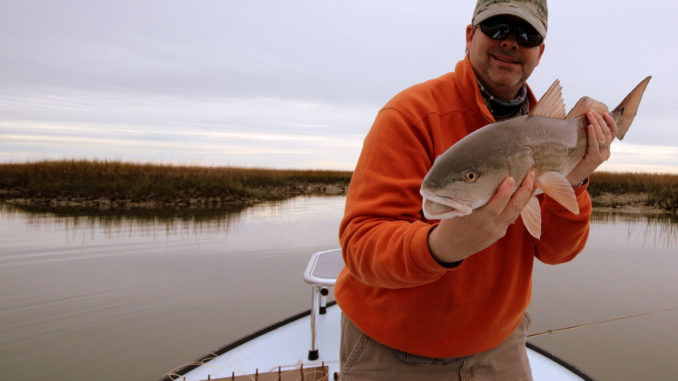
Live or cut bait is the ticket for getting the most out of South Edisto reds, but artificials and flies have their place in an angler’s arsenal.
It happens to every fisherman at sometime or another. A sick feeling in the pit of a stomach for some, panic for others, and even anger for a select few souls. Yep, the sight of someone anchored up in your favorite spot can cause quite an internal stir, and when it is followed up by someone anchored up on your second favorite fishing spot….
Let’s face it, there are no secret spots anymore, not really. Thanks to message boards, Google and the loudmouth down the street, the secret is out. Chances are that secret spot was originally obtained partly, or wholly, due to one of those three reasons in the first place, so no need to whine about it.
A better way to deal with it is to fish less-pressured areas where the chances of someone else fishing a favorite, or even a second favorite, hot spot is much less likely. The best way to do that is leave the big population areas and popular landings and head to a place less convenient, a place that requires setting the alarm clock an hour or two earlier, a place that takes a few more gallons of gas in the truck to reach — a place like the South Edisto River.
“It’s one of those things I almost hate to tell people about, because it is a very untapped fishery, and if you put the time in to find fish, you can have them to yourself almost exclusively — catching fish all day,” guide Colt Harrison said.
But Steve Fralin of Ugly Ducklin’ Charters, who has guided for 23 years, isn’t terribly worried about being run over. You see, it takes some real effort to get to the South Edisto.
“People come to Edisto to fish because they don’t want the hustle and bustle of the more populous areas and rather enjoy spending time in a laid back, family oriented place,” he said.
In December Harrison and Fralin target redfish. Harrison’s favorite spots are the mud flats on the east side of the river
“Look for big, broad mud flats about 12 to 18 inches in depth with long oyster points that stick out,” Harrison said.
By late fall, reds bunch up into big schools and move to shallow water in an attempt to stay out of the reach of dolphins, who key in on them after most of their other favorite foods leave inshore waters as the water cools. This makes finding reds in large numbers much easier, especially on calm days.
“On calms days, you can see reds moving around, making wakes, rolling and tailing on the flats, and if shrimp are still around, you will see them popping out of water trying to escape from the reds while seagulls swoop down for an easy meal,” he said.
Harrison prefers to throw flies at reds when they are visible. A flats boat poled stealthily works best for approaching a school because reds are easily spooked; the noise from an engine or even the pulse of a trolling motor can send them swimming off in a hurry. Once a school is spotted, the boat should be moved into a position that allows anglers to make a cast in front of the fish without getting so close that it sends them swimming away in a panic. When a school is in casting range, it is important not to simply place a fly or lure directly in the middle of the fish. Often, throwing in the middle of a school will result in a quick bite, but the rest of the fish will often spook. The best way to pull several fish from a school is to target reds on the edges nearest the boat and keeping them from running back through the school once hooked.
Fralin seeks out structure when searching for reds because he’s had more success anchoring up and fishing specific pieces of cover.
“I target typical structure like oyster beds and blown down trees,” said Fralin, who can catch more than just skinny water reds. “The fishing is so good out here, we have had days where we caught a grand slam (trout, redfish, flounder) without ever pulling up anchor.”
Reds are not the only fish plentiful in the South Edisto this month. Big trout in big numbers are also available.
“One day last year, between Christmas and New Year’s, my buddies and I caught over 100 keeper trout in just a few hours, but we let most of them go,” said Fralin, who prefers live bait for specks, mud minnows or shrimp — if the latter is still available.
Fralin also uses live bait for reds, but he uses cut mullet, too. Many people, especially those who do not target winter reds, surprised to discover just how well cut bait works. When food is scarce and cold water has reds sluggish, an easy meal is hard to beat, and in many instances cut bait will outperform live bait.
Harrison prefers fly fishing, but even he has days when he likes to throw bait.
“When I just want to catch a lot of fish I’ll stop … on the way down and buy some crabs,” he said. “With crabs, you can catch reds ’til your arms fall off.”
For rigging live and cut bait, Fralin and Harrison both fish Carolina rigs to keep their offerings on the bottom. When fishing with crabs, Harrison prefers a 3/0 circle hook and free-lines the bait in slack water or with a 2-ounce sinker when dealing with current.
“I take a live crab, pull the carapace and legs off, break it in half, and just put one of the big pieces left over on the hook” he said.
Fralin takes bait fishing very seriously, never uses anything else and only fishes the bottom.
“Fish go by smell and vibrations more than sight, and in my 23 years of guiding, I have learned that lures and tackle catch more fisherman than fish,” he said.
DESTINATION INFORMATION
WHERE TO GO — The South Edisto River is most-easily accessed from two landings on the western end of Edisto Island. Marina Landing is a public landing at the Edisto Marina at 3702 Dock Site Rd., and Live Oak Landing is a state-park landing off CR 1461, just up Big Bay Creek from Marina Landing.
TACKLE — Most fishermen prefer 7-foot, medium to medium- light spinning rods matched with 2500 series reels spooled with 10- to 20-pound braided line and 18- to 20-pound monofilament or fluorocarbon leaders. When fishing with bait, Carolina rigs with 3/0 to 4/0 circle hooks are a good choice; use as little weight as possible to keep from spooking fish. Artificial lures that imitative baitfish or shrimp are a good choice when searching for schools of reds in poor visibility conditions. For fly-fishing, 7- to 9-weight fly rods with floating line and at least nine feet of 12- to 20-pound fluorocarbon leaders are best. Large-arbor fly reels keep lines from coiling too much in the cold, and a good drag with plenty of backing ensure the big one won’t get away. A variety of flies in darker colors like purple and black that imitate shrimp, crabs, and baitfish will work on the South Edisto.
GUIDES/FISHING INFO — Capt. Colt Harrison, 864-380-0490; Capt. Steve Fralin, Ugly Ducklin’ Charters, 843-869-1580, www.edistofishingcharters.com; Flowers Seafood, 843-869-3303; Edisto Watersports, 843-869-0663, www.edistowatersports.biz.
ACCOMMODATIONS — Edisto Chamber of Commerce, 843-860-3867, www.edistochamber.com; Edisto Beach State Park (camping/cabins), 843-869-2156, www.southcarolinaparks.com.
MAPS — Sealake Fishing; Guides, 800-411-0185, www.thegoodspots.com; Capt. Segull’s Nautical Charts, 888-473-4855, www.captainsegullcharts.com.

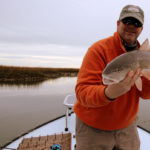
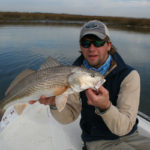
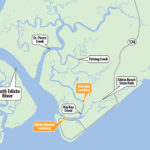
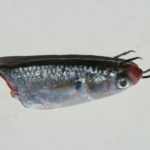



Be the first to comment